Chrysler 2011 Annual Report Download - page 57
Download and view the complete annual report
Please find page 57 of the 2011 Chrysler annual report below. You can navigate through the pages in the report by either clicking on the pages listed below, or by using the keyword search tool below to find specific information within the annual report.-
 1
1 -
 2
2 -
 3
3 -
 4
4 -
 5
5 -
 6
6 -
 7
7 -
 8
8 -
 9
9 -
 10
10 -
 11
11 -
 12
12 -
 13
13 -
 14
14 -
 15
15 -
 16
16 -
 17
17 -
 18
18 -
 19
19 -
 20
20 -
 21
21 -
 22
22 -
 23
23 -
 24
24 -
 25
25 -
 26
26 -
 27
27 -
 28
28 -
 29
29 -
 30
30 -
 31
31 -
 32
32 -
 33
33 -
 34
34 -
 35
35 -
 36
36 -
 37
37 -
 38
38 -
 39
39 -
 40
40 -
 41
41 -
 42
42 -
 43
43 -
 44
44 -
 45
45 -
 46
46 -
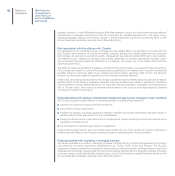 47
47 -
 48
48 -
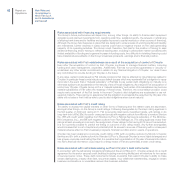 49
49 -
 50
50 -
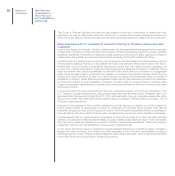 51
51 -
 52
52 -
 53
53 -
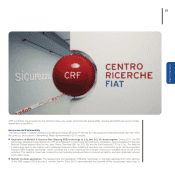 54
54 -
 55
55 -
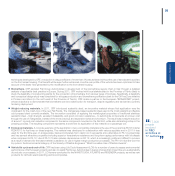 56
56 -
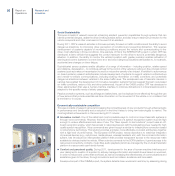 57
57 -
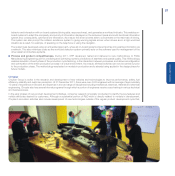 58
58 -
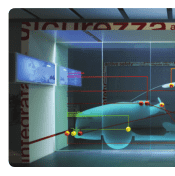 59
59 -
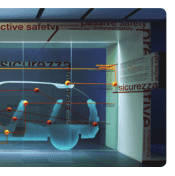 60
60 -
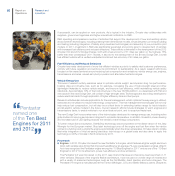 61
61 -
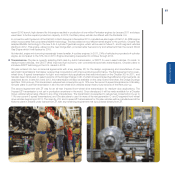 62
62 -
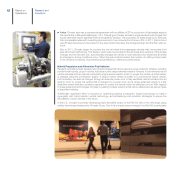 63
63 -
 64
64 -
 65
65 -
 66
66 -
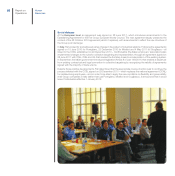 67
67 -
 68
68 -
 69
69 -
 70
70 -
 71
71 -
 72
72 -
 73
73 -
 74
74 -
 75
75 -
 76
76 -
 77
77 -
 78
78 -
 79
79 -
 80
80 -
 81
81 -
 82
82 -
 83
83 -
 84
84 -
 85
85 -
 86
86 -
 87
87 -
 88
88 -
 89
89 -
 90
90 -
 91
91 -
 92
92 -
 93
93 -
 94
94 -
 95
95 -
 96
96 -
 97
97 -
 98
98 -
 99
99 -
 100
100 -
 101
101 -
 102
102 -
 103
103 -
 104
104 -
 105
105 -
 106
106 -
 107
107 -
 108
108 -
 109
109 -
 110
110 -
 111
111 -
 112
112 -
 113
113 -
 114
114 -
 115
115 -
 116
116 -
 117
117 -
 118
118 -
 119
119 -
 120
120 -
 121
121 -
 122
122 -
 123
123 -
 124
124 -
 125
125 -
 126
126 -
 127
127 -
 128
128 -
 129
129 -
 130
130 -
 131
131 -
 132
132 -
 133
133 -
 134
134 -
 135
135 -
 136
136 -
 137
137 -
 138
138 -
 139
139 -
 140
140 -
 141
141 -
 142
142 -
 143
143 -
 144
144 -
 145
145 -
 146
146 -
 147
147 -
 148
148 -
 149
149 -
 150
150 -
 151
151 -
 152
152 -
 153
153 -
 154
154 -
 155
155 -
 156
156 -
 157
157 -
 158
158 -
 159
159 -
 160
160 -
 161
161 -
 162
162 -
 163
163 -
 164
164 -
 165
165 -
 166
166 -
 167
167 -
 168
168 -
 169
169 -
 170
170 -
 171
171 -
 172
172 -
 173
173 -
 174
174 -
 175
175 -
 176
176 -
 177
177 -
 178
178 -
 179
179 -
 180
180 -
 181
181 -
 182
182 -
 183
183 -
 184
184 -
 185
185 -
 186
186 -
 187
187 -
 188
188 -
 189
189 -
 190
190 -
 191
191 -
 192
192 -
 193
193 -
 194
194 -
 195
195 -
 196
196 -
 197
197 -
 198
198 -
 199
199 -
 200
200 -
 201
201 -
 202
202 -
 203
203 -
 204
204 -
 205
205 -
 206
206 -
 207
207 -
 208
208 -
 209
209 -
 210
210 -
 211
211 -
 212
212 -
 213
213 -
 214
214 -
 215
215 -
 216
216 -
 217
217 -
 218
218 -
 219
219 -
 220
220 -
 221
221 -
 222
222 -
 223
223 -
 224
224 -
 225
225 -
 226
226 -
 227
227 -
 228
228 -
 229
229 -
 230
230 -
 231
231 -
 232
232 -
 233
233 -
 234
234 -
 235
235 -
 236
236 -
 237
237 -
 238
238 -
 239
239 -
 240
240 -
 241
241 -
 242
242 -
 243
243 -
 244
244 -
 245
245 -
 246
246 -
 247
247 -
 248
248 -
 249
249 -
 250
250 -
 251
251 -
 252
252 -
 253
253 -
 254
254 -
 255
255 -
 256
256 -
 257
257 -
 258
258 -
 259
259 -
 260
260 -
 261
261 -
 262
262 -
 263
263 -
 264
264 -
 265
265 -
 266
266 -
 267
267 -
 268
268 -
 269
269 -
 270
270 -
 271
271 -
 272
272 -
 273
273 -
 274
274 -
 275
275 -
 276
276 -
 277
277 -
 278
278 -
 279
279 -
 280
280 -
 281
281 -
 282
282 -
 283
283 -
 284
284 -
 285
285 -
 286
286 -
 287
287 -
 288
288 -
 289
289 -
 290
290 -
 291
291 -
 292
292 -
 293
293 -
 294
294 -
 295
295 -
 296
296 -
 297
297 -
 298
298 -
 299
299 -
 300
300 -
 301
301 -
 302
302 -
 303
303 -
 304
304 -
 305
305 -
 306
306 -
 307
307 -
 308
308 -
 309
309 -
 310
310 -
 311
311 -
 312
312 -
 313
313 -
 314
314 -
 315
315 -
 316
316 -
 317
317 -
 318
318 -
 319
319 -
 320
320 -
 321
321 -
 322
322 -
 323
323 -
 324
324 -
 325
325 -
 326
326 -
 327
327 -
 328
328 -
 329
329 -
 330
330 -
 331
331 -
 332
332 -
 333
333 -
 334
334 -
 335
335 -
 336
336 -
 337
337 -
 338
338 -
 339
339 -
 340
340 -
 341
341 -
 342
342 -
 343
343 -
 344
344 -
 345
345 -
 346
346 -
 347
347 -
 348
348 -
 349
349 -
 350
350 -
 351
351 -
 352
352 -
 353
353 -
 354
354 -
 355
355 -
 356
356 -
 357
357 -
 358
358 -
 359
359 -
 360
360 -
 361
361 -
 362
362 -
 363
363 -
 364
364 -
 365
365 -
 366
366 -
 367
367 -
 368
368 -
 369
369 -
 370
370 -
 371
371 -
 372
372 -
 373
373 -
 374
374 -
 375
375 -
 376
376 -
 377
377 -
 378
378 -
 379
379 -
 380
380 -
 381
381 -
 382
382 -
 383
383 -
 384
384 -
 385
385 -
 386
386 -
 387
387 -
 388
388 -
 389
389 -
 390
390 -
 391
391 -
 392
392 -
 393
393 -
 394
394 -
 395
395 -
 396
396 -
 397
397 -
 398
398 -
 399
399 -
 400
400 -
 401
401 -
 402
402
 |
 |

Report on
Operations
56
Research and
Innovation
Social Sustainability
This area consists of research aimed at enhancing accident prevention capabilities through systems that can
identify potential dangers, assist the driver in taking evasive action, and also ensure maximum protection for the
vehicle occupants and other road users in the event of an accident.
During 2011, CRF’s research activities in this area primarily focused on traffic conditions and the ability to avoid
dangerous situations, by improving driver perception of conditions and preventing distraction. This requires
development of systems capable of monitoring conditions around the vehicle and communicating to the
driver most effectively in those conditions. One example of this is the INTERACTIVE project in which CRF has
developed a demo vehicle that suggests the correct maneuver for the driver to avoid a potentially dangerous
situation. In addition, the ability to monitor the vehicle’s position with greater precision enables activation of
warning and control systems to correct driver error and avoid dangerous situations attributable to, for example,
accidental lane changes or driver fatigue.
Sophisticated sensor systems enable utilization of a range of information – including position, relative speed
and distance, deceleration – to contribute actively to the control of the vehicle by acting on the principal control
systems (such as brakes or transmission) to avoid or reduce the severity of an impact. In addition to autonomous
on-board systems, research activities also include development of systems to support vehicle-to-infrastructure
and vehicle-to-vehicle communications, including sharing information on traffic conditions and potentially
dangerous situations between vehicles in the same traffic area. The widespread use of telematic devices in
vehicles has enabled the development of innovative navigation systems that can suggest the best route based
on traffic conditions, nature of trip and driver preferences. As part of the OASIS project, CRF has developed a
driver assist system that uses a human-machine interface to minimize distractions in critical situations and is
adapted to the specific needs of elderly passengers.
Passive protection systems, such as airbags and safety belts, can be deployed more effectively through the use
of new sensors that provide essential real-time information on the movement of the vehicle or on a collision that
is imminent or in course.
Economically-sustainable competition
This area consists of research aimed at increasing the competitiveness of new products through enhancements
in performance and functionality and a reduction in the time it takes to bring new technologies to market. The
most significant achievements in this area during 2011 include:
Innovative content. One of the safest and most immediate ways to control on-board telematic systems is
through voice commands. However, the level of performance of a speech recognition system must be high
enough to ensure effectiveness and ease of use. The “New speech-to-text solutions” project uses an off-
board recognition engine, which has access to networked servers with the calculating power needed for high
quality speech recognition. Voice commands are given through a vehicle-to-infrastructure connection based
on smartphone technology. This solution provides a simpler, more affordable on-board architecture together
with a high level of performance. The European SOFIA project, whose objective is to maximize integration
of personal devices (e.g., cell phones, media players, wireless headsets, etc.) with the on-board information
system, has introduced an interoperable platform that provides transparent access to the resources made
available by devices inside the vehicle. When a device connects to the SOFIA platform, it grants access to its
resources (connectivity, contacts, music files, audio playback) which are managed by the on-board telematic
platform in a secure and user-friendly format.
Comfort and perceived quality. During 2011, development in the area of human-machine interfaces and
user dialog led to creation of a system to actively manage information and assist drivers based on workload,
in order to reduce and control that workload, as well as increasing the effectiveness of communications and
assistance given to the driver, through innovations such as collision avoidance and lane assist.
Developed as part of the CAMMI project, the system detects driver workload in real time, by assessing driving
